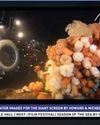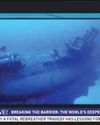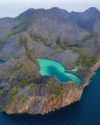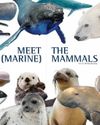Much attention is focused on Raja Ampat’s animals and land and seascapes. But there is one vital aspect of the area which is often overlooked: the local people, and tourism’s impact on their lives.

THOUSANDS OF TOURISTS come from all over the world to blow bubbles in Raja Ampat. But there are people who have lived here since long before all this, people who have made their lives from Raja’s rich waters and continue to do so. These people have seen huge changes, some of which may have affected their lives and livelihoods as well.
IS RAJA’S STATUS WORKING FOR THE PEOPLE?
In 2004 Raja Ampat was listed as a marine protected area as well as the world’s first manta sanctuary. Local residents are still allowed to fish, although fishing species like sharks, mantas, turtles, and dugong is strictly prohibited, along with certain destructive fishing methods like dynamite fishing. With a steady influx of visitors, brought into the area largely by the the region’s incredible and now famous diving, the tourism industry is growing at a steady rate. As eco-resorts, homestays, and liveaboards slowly establish themselves here, they seem to be opening up a wide range of new job opportunities for people as boat captains, dive guides, construction workers and others.
From most peoples’ perspectives all these things sound like an instant win – protected waters and lots of new jobs. Winner! But it would be naive to think that everyone would perceive these new changes as a positive thing, specifically those whose lives are changing. After all, the people of Raja have been living here, in more or less the same way, for generations – making their living from what they’ve harvested from the land and sea – only to watch it all that change in less than a decade.
Bu hikaye Asian Diver dergisinin Issue 04 - 2016 sayısından alınmıştır.
Start your 7-day Magzter GOLD free trial to access thousands of curated premium stories, and 9,000+ magazines and newspapers.
Already a subscriber ? Giriş Yap
Bu hikaye Asian Diver dergisinin Issue 04 - 2016 sayısından alınmıştır.
Start your 7-day Magzter GOLD free trial to access thousands of curated premium stories, and 9,000+ magazines and newspapers.
Already a subscriber? Giriş Yap

The Sea Specialist: An Interview With Bret Gilliam
Most people learn to crawl before they walk, but there is a man who learned to swim before taking his first steps. Diver, entrepreneur, writer, athlete, maritime specialist – Bret Gilliam is the complete package. Just add water.

The Best Of Diving In Southeast Asia: Explore The Amazon Of The Seas
Southeast Asia encompasses the world’s most biodiverse reefs and some of the best diving anywhere on the planet. From the tiniest and rarest critters to huge fish schools and the biggest pelagics, the region has it all, and there’s something to suit divers of any level.

Below With David Doubilet & Jennifer Hayes
Best known for their work with National Geographic, David Doubilet and Jennifer Hayes came together to discuss their work with the youth, and, as Jennifer put it, “submerging with the emerging talent”.

Underwater Images For The Giant Screen
Howard and Michele Hall are best known for their success in underwater IMAX filmmaking.

Journey To Filming For National Geographic Wild Brazil
Cristian is an acclaimed and highly versatile Brazilian wildlife filmmaker who works both underwater and topside.

Breaking The Barrier: The World's Deepest Dive
David Strike shared a brilliant presentation about the history of deep diving and how Lt. George Wookey achieved the world’s deepest dive in 1956 using a surface-supplied rebreather.

Dive the Golden Land
The Best of Diving In Southeast Asia

OFFICIAL LAUNCH OF BLUE HOPE
Top Session of the Week (14,319 (Views) / 42,831 (Reach)

MEET THE (MARINE) MAMMALS
MEET THE (MARINE) MAMMALS

Fashion Faux Pas
What can be done to mitigate the impact of the garment industry on our oceans?